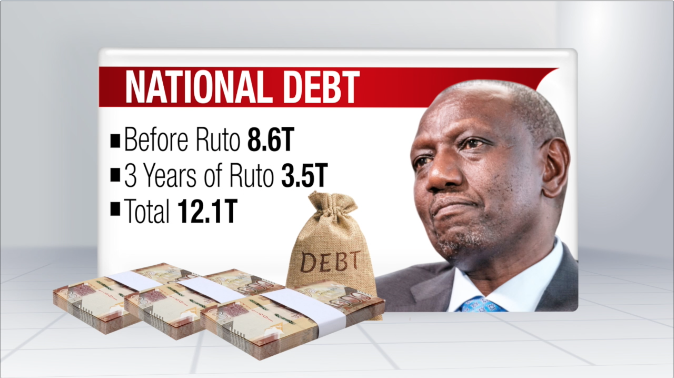
President William Ruto. Photo/Citizen Digital
By Newsflash Writer
The government’s recurrent spending for the financial year ending June 30, 2025, overshot projections by Sh134.72 billion, defying President William Ruto’s commitment to trim public spending in the aftermath of the collapsed Finance Bill 2024.
According to Treasury Cabinet Secretary John Mbadi, the government spent Sh1.44 trillion on recurrent costs such as salaries, maintenance, operations, and administrative expenses, compared to the Sh1.3 trillion projected in the first budget revision.
These estimates—excluding priority obligations like debt repayments and pensions—were revised upward by 10.30 percent during further reviews in February and June. Key contributors to the spending surge included the State House, Office of the President at Harambee House, Deputy President’s office, the State Department for Internal Security, the National Intelligence Service (NIS), and the National Police Service.
Despite public commitments to cut back, State House expenditure rose to a staggering Sh11.64 billion—an increase of 170.38 percent from the Sh4.31 billion allocation approved by Parliament after the tax bill’s collapse.
The Office of the President at Harambee House, headed by Dr Ruto, saw its spending rise 27.01 percent to Sh4.55 billion from the Sh3.58 billion forecast last August. From late June to July 2024, widespread protests—spearheaded by Gen Z demonstrators in cities nationwide—erupted over proposed new taxes amid a high cost of living and widespread youth unemployment. Protesters also condemned corruption and poor leadership, with the unrest resulting in the deaths of at least 60 civilians.
Gen Z protests force Ruto’s government reboot
Galvanized by social media, the protests forced President Ruto to withdraw the Finance Bill 2024 and restructure his administration, incorporating five leaders from the opposition ODM party into a broader coalition government.
This reorganisation included the dismissal of all Cabinet Secretaries except one, followed by the reappointment of nine ministers. It also triggered the impeachment of Deputy President Rigathi Gachagua in October. Treasury records show the Deputy President’s office spent Sh3.21 billion in the period under review, exceeding the Sh2.59 billion allocation by 23.91 percent. The Interior ministry spent Sh36.81 billion, surpassing its budget by 32.73 percent from the initial Sh27.73 billion.
Read more: Mbadi announces 50% cut in Digital Service Tax
The NIS reported recurrent expenditures of Sh58.65 billion, a 26.54 percent increase from estimates made after the Finance Bill failed. Meanwhile, the National Police Service spent Sh115.30 billion—6.13 percent over the budget.
The rise in recurrent expenditure stood in contrast to the austerity promises made by President Ruto at the beginning of the financial year. At the time, the administration pledged to protect essential services in the Agriculture, Health, and Education sectors while cutting other spending. “While it could be prudent to reduce expenditures by the amount equivalent to the anticipated revenue shortfall of Sh344.3 billion, this was not tenable given the delicate balance between austerity measures and cushioning the livelihoods of the people and the economy,” the Supplementary Appropriations Bill 2024 noted.
Among the cost-cutting pledges were the elimination of funding for the offices of the First and Second Ladies, as well as the scrapping of secret spending allocations across all public offices, including State House. President Ruto also halted the acquisition of luxury vehicles—some costing more than Sh30 million each—for six months and halved the number of government advisers. These announcements were made during a televised address from State House Nairobi on July 5, 2024, in response to the youth-led demonstrations.



